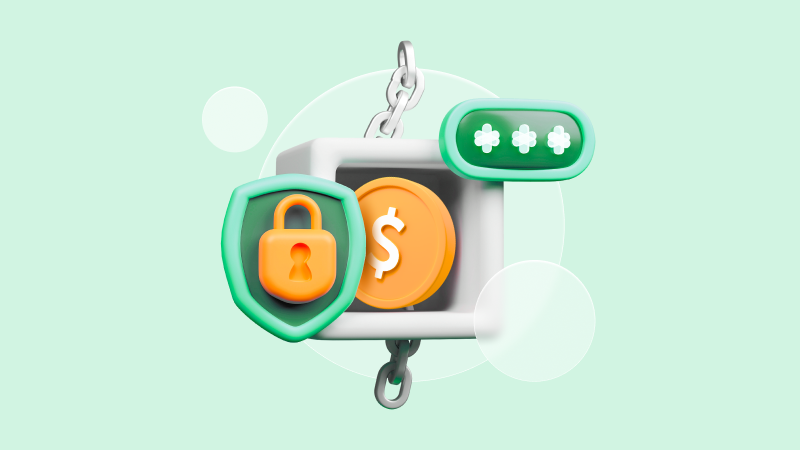What Is TVL?
Total value locked (TVL) is the total value of cryptocurrency deposited in decentralized finance (DeFi) or DeFi protocols. It is a crucial metric for measuring interest in the definite crypto industry sector. It shows how healthy the protocol, the DeFil, the DeFi, and the yield market are.
TVL contains all the deposited coins in the functions DeFi protocols offer, such as staking, lending, and liquidity pools.
It doesn't show the yield that these deposits are suggested to earn. It only reflects the current value of the deposits themselves.
A protocol's TVL changes when users make new deposits or withdraw their crypto. But it is also continuously changing with the fluctuating dollar value of all those assets in the cryptocurrency market. Some or all of a DeFi protocol's deposits can be denominated in its own token. If its native token grows in value, the protocol's TVL grows as well.
The combined TVL of all DeFi protocols grew steadily between 2020 and 2021. Thus, at the beginning of 2020, the combined TVL over all DeFi platforms was around $630 million, according to DeFi Llama’s stats. More than half of that was in MakerDAO protocol. The project jumped to about $241 billion by the end of 2021.
MakerDAO is one of the largest protocols, along with others such as Curve and Aave. Each of them had about $10 billion in TVL.
Protocols can run on one network or across many, which means they have an independent TVL on each network. The largest network by DeFi TVL is Ethereum.
Why Is TVL Important?
TVL is an indicator of the overall state of the DeFi market. A quick increase in TVL shows investors the project's value, and more money flows through its network. It helps investors define if a protocol is healthy and worth investing in.
A high TVL indicates high liquidity, popularity, and usability, proving that DeFi is worth watching. An increasing TVL gives profits to investors, enjoying considerably higher liquidity and returns.
Vice versa, a lower TVL means lesser availability of money, showing that the investors will not receive enough rewards if they stake the token of this protocol.
Investors use TVL to understand if the native token of a protocol is undervalued or overvalued. A token can be considered overvalued or undervalued if its market cap is high or low compared to the TVL of the whole project.
How to Calculate TVL?
Calculating the TVL is quite easy. You need to multiply the number of tokens deposited in a project by its current price in USD, and that's where the project's TVL is. If a project allows deposits in various tokens, you have to calculate the TVL for each token and then add them up to find the project's TVL.
To check if a project's native token is under or overvalued, you need to calculate the TVL ratio of the project. Divide the market cap by the token's TVL. Market cap is the total number of tokens in circulation multiplied by their current price. An asset is undervalued if the TVL ratio is less than one and another way around.
Here’s an example for AAVE:
Market Cap: $3.156.837.340
Fully Diluted Valuation: $3.770.129.516
Total Value Locked (TVL): $15.083.062.952
Market Cap / TVL Ratio: 0.21
Fully Diluted Valuation / TVL Ratio: 0.25
Highest TVL Cryptos
Checking out the DeFi protocols using the TVL metric can help start by looking at the projects with the most value. These protocols use different mechanisms and aim at different goals, but they all have impressive TVL figures. So, the strongest players are Curve, Lido, Maker, Aave, Uniswap, and Compound.
TVL and Market Capitalisation Difference
What about market capitalization? It also can be an indicator of a project's performance. The DeFi protocol's market capitalization reflects a protocol's support by active, passive investors. The total value locked is a clear indicator of the performance of a protocol in the DeFi domain.
The matter is that passive investors might not use the protocol itself and must have invested in it for favorable long-term returns. Passive investors buy the tokens of protocols to profit one day, which impacts the growth in market capitalization. However, TVL stands for the actual usability of the platform with investors.
Market capitalization shows an impression of the future potential of a DeFi protocol. As for the total value locked, it demonstrates how the protocol is performing now.
Where to Look for TVL?
There are reliable analytics platforms like DeFi Pulse and DeFi Llama that can help you find the TVL for a particular DeFi protocol. They provide a detailed display of the total value locked in DeFi protocols worldwide. So, you can identify the DeFi protocols with the highest volume of crypto assets staked in the platforms.
DeFi Pulse monitors the smart contract transactions of the DeFi protocol running on the Ethereum blockchain. It shows the TVL value using the total balance of ERC-20 tokens and Ether within the protocol.
DeFi Llama calculates the TVL differently. The platform takes the combined balance of all DeFi chains or every individual platform for calculating TVL.
Wrap-Up
TVL is important as it's a great indicator of how successful a DeFi performs right now and shows its potential. It guides investors regarding the value of new or existing DeFi protocols and paves the road to easier DeFi adoption.
Suppose you want to assess the total assets in a system or examine the TVL ratio to determine whether a protocol’s tokens are undervalued. In that case, the metric can be quite useful.
